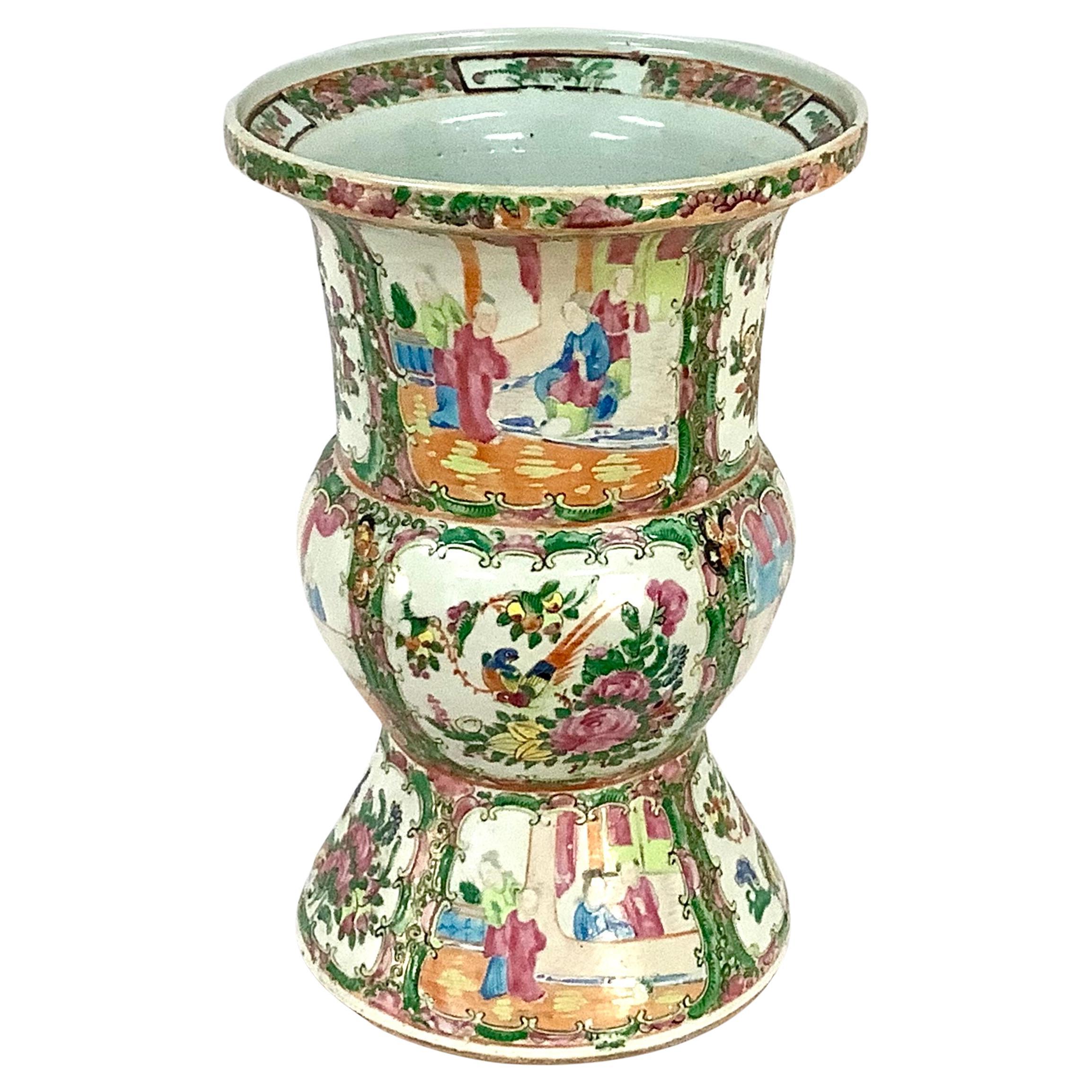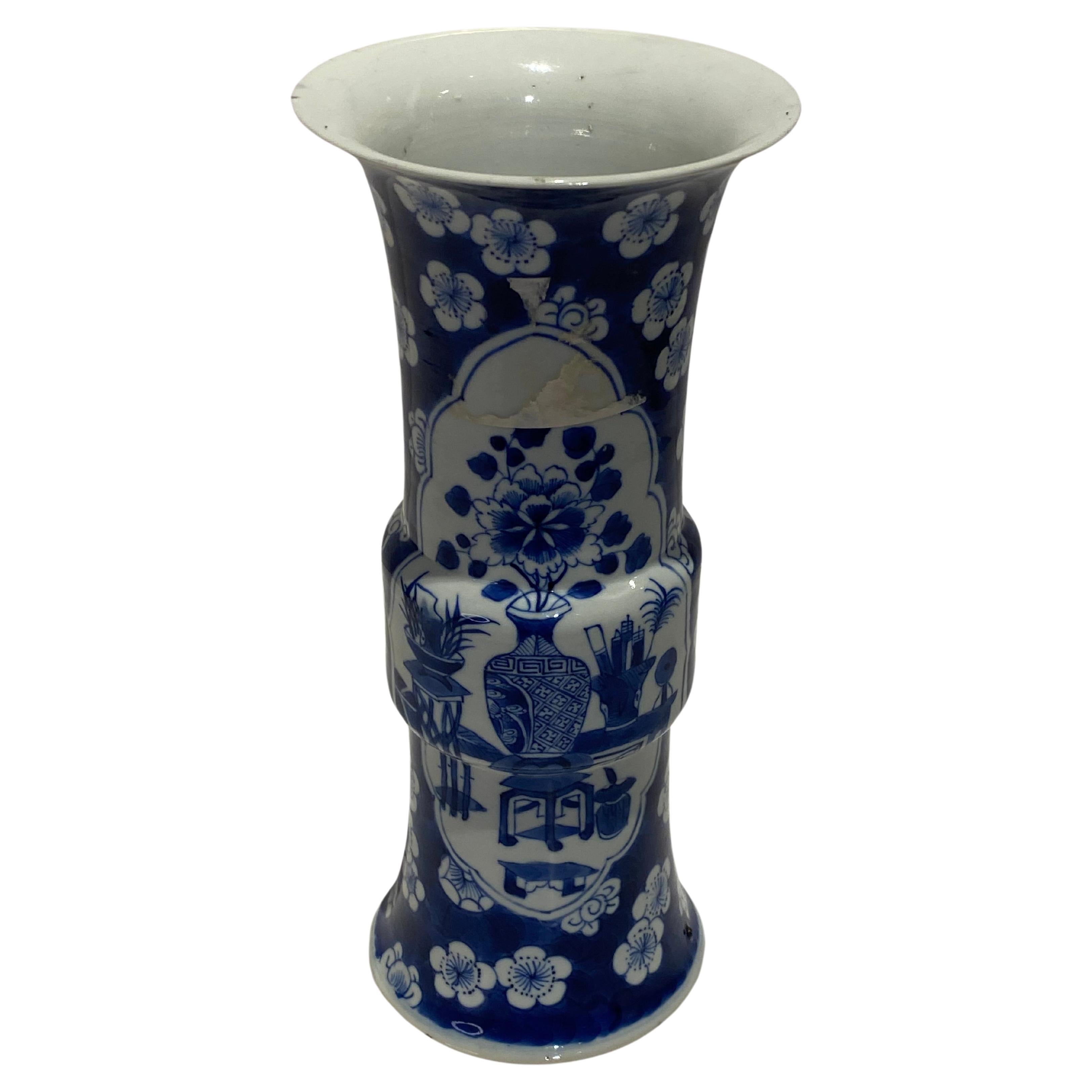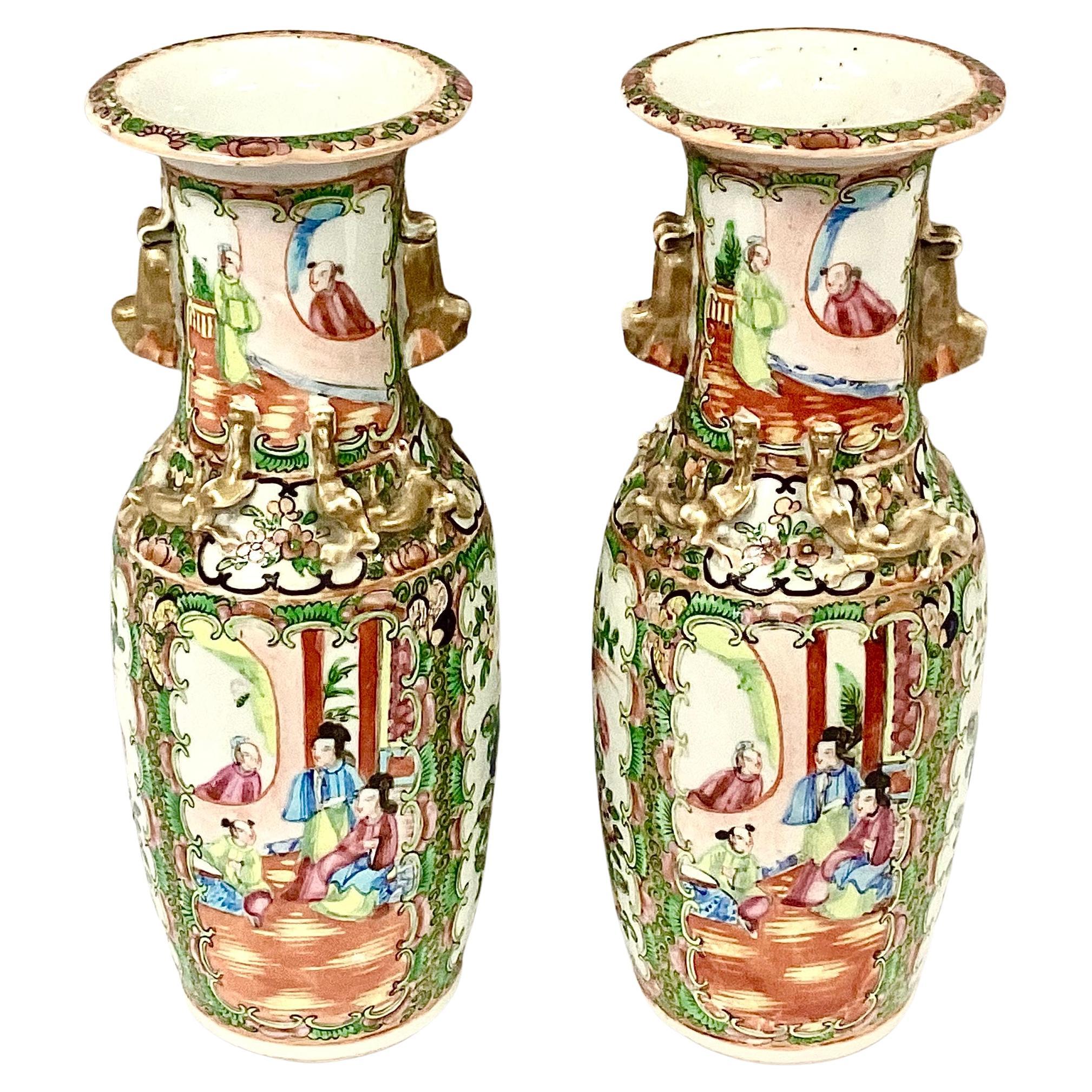Items Similar to 19th Century Chinese Nankin Porcelain Vase
Video Loading
Want more images or videos?
Request additional images or videos from the seller
1 of 19
19th Century Chinese Nankin Porcelain Vase
About the Item
Nanjing Porcelain, also known as Nanking Porcelain and referred to as "Nanjing" by Western dealers in the 19th century, was a type of Chinese porcelain crafted for export during the Qing dynasty. Produced in Jingdezhen and frequently shipped to Europe via the port of Nanjing, this porcelain bore the city's name due to its departure point. Despite its export purpose, the porcelain's designs and embellishments remained rooted in Chinese artistic traditions. Interestingly, a significant portion of the polychrome porcelain was initially made in white at Nanjing and later dispatched to Canton for intricate painting.
This specific vase showcases a classic baluster form. This vase style is characterized by its gracefully rounded body and slender neck, which often tapers towards the top. Elaborate depictions of guardian lions and relief dragons adorn the neck and shoulder of the vase. Guardian lions, also known as foo dogs, along with dragons, are recurring themes in Chinese art, carrying symbolic meanings of safeguarding and auspiciousness. Additionally, the neck and body of the vase is adorned with intricate portrayals of warriors and battle scenes, which could potentially hold historical or mythological significance.
- Dimensions:Height: 17.72 in (45 cm)Diameter: 7.88 in (20 cm)
- Style:Chinese Export (Of the Period)
- Materials and Techniques:
- Place of Origin:
- Period:
- Date of Manufacture:19th Century
- Condition:Wear consistent with age and use.
- Seller Location:Ixelles, BE
- Reference Number:1stDibs: LU8924235547872
About the Seller
No Reviews Yet
Vetted Seller
These experienced sellers undergo a comprehensive evaluation by our team of in-house experts.
1stDibs seller since 2023
Typical response time: A week
- ShippingRetrieving quote...Ships From: Ixelles, Belgium
- Return PolicyA return for this item may be initiated within 14 days of delivery.
More From This SellerView All
- Pair of 19th Century Qing Dynasty Faux Bamboo Chinese VasesLocated in Ixelles, BEFaux bamboo Chinese vases were a type of decorative art that emerged during the Qing Dynasty (1644-1912) in China. These porcelain vases were designed to mimic the appearance of bamboo, a plant highly regarded in Chinese culture for its resilience, elegance, and symbolism. Bamboo is associated with attributes such as flexibility, strength, and modesty, making it a popular motif in Chinese art. In the Qing Dynasty the color yellow held significant symbolism and represented imperial authority, power, and the emperor himself. Yellow was considered the most sacred and prestigious color in Chinese culture, and it had strong associations with the emperor's position as the Son of Heaven and the ruler of all under heaven. The marks at the bottom of the vases indicate that these were crafted more specifically during the Tongzhi period – an emperor who reigned from 1861 to 1875, which effectively lasted nthrough his adolescence and was largly overshadowed by the rule of his mother, Empress Dowager Cixi. Although he had little influence over state affairs, the events of his reign gave rise to what historians call the “Tongzhi Restoration”, an unsuccessful modernization program. The polychrome enamels representing on one vase a traditional Chinese kite...Category
Antique Late 19th Century Chinese Chinese Export Ceramics
MaterialsPorcelain
- Pair of Late 19th Century Cantonese Famille Rose Vases in PorcelainLocated in Ixelles, BEFamille Rose refers to a type of Chinese porcelain characterized by the use of opaque, brightly colored enamels, prominently featuring shades of pink, purple, green, and yellow. The ...Category
Antique Late 19th Century Chinese Chinese Export Ceramics
MaterialsPorcelain
- Large Pair of Graduated Turquoise Porcelain Foo Dogs. Chinese Circa 1880Located in Ixelles, BEChinese turquoise-colored porcelain foo dogs from circa 1880 are exquisite examples of traditional Chinese ceramic art. Foo dogs, also known as guardian lions or temple lions, are ic...Category
Antique Late 19th Century Chinese Qing Ceramics
MaterialsCeramic
- Pair of Moon-Shaped Vases, China Late 19th CenturyLocated in Ixelles, BEA pair of large moon-shaped "flasks" vases painted in blue and white, each flask decorated with scenes of active characters and surrounded by borders of floral motifs and foliate pat...Category
Antique Late 19th Century Chinese Antiquities
MaterialsPorcelain
- Pair of Japanese Moriage Satsuma Vases with Gold Gilding Circa 1930-1940Located in Ixelles, BEJapanese Satsuma vases from the circa 1930-1940 period are a particular style of ceramic art that originated from the Satsuma province of Japan. Satsuma ware is renowned for its intricate hand-painted designs, rich colors, and distinctive crackled glaze. Satsuma ware dates back to the early 17th century, but it gained widespread popularity in the late 19th and early 20th centuries, including the 1930s and 1940s. Satsuma vases produced during this time often reflected a mix of traditional and modern influences, as Japan went through a period of cultural exchange and artistic experimentation. Satsuma vases are made from a type of Japanese earthenware clay known for its fine texture and malleability. The vases are hand-formed or wheel-thrown and then meticulously hand-painted with intricate designs using enamel paints. The distinctive crackled glaze was achieved by firing the vases at a relatively low temperature, allowing the glaze to crack during the cooling process. The moriage technique involves applying three-dimensional, raised ornamentation to the surface of the ceramic piece, creating a visually textured and layered effect. Artisans create three-dimensional patterns, designs, or intricate motifs using a special mixture of clay, slip, or porcelain paste. The raised elements are added by hand to the ceramic body, and each detail is carefully shaped to achieve the desired effect. The moriage is then gold gilded as some of the intricate ornamental patterns and the halos around the three immortal...Category
Early 20th Century Japanese Showa Ceramics
MaterialsPottery
- Marc Clauzade Painting of Saint Tropez Ref 086By Marc ClauzadeLocated in Ixelles, BEMarc Clauzade: Capturing the Essence of French Artistry Hailing from the vibrant city of Paris, Marc Clauzade stands as France’s most prominent living artistic asset, a testament to...Category
Late 20th Century French Paintings
MaterialsCanvas, Paint
You May Also Like
- 19th Century Chinese Porcelain Rose Medallion VaseLocated in Bradenton, FLAntique 19th century rose medallion vase with a bulbous center section and a smaller flared out section on the bottom and a larger flared out section on the top The colors are vivid....Category
Antique 19th Century Chinese Chinese Export Ceramics
MaterialsPorcelain
- Antique Chinese Rose Mandarin Porcelain Vase, 19th CenturyLocated in Philadelphia, PAA very fine, antique Chinese Rose Mandarin porcelain vase. With rich polychrome enamel decoration on a light celadon ground. An excel...Category
Antique 19th Century Chinese Chinese Export Ceramics
MaterialsPorcelain
- 19th Century Greyish Celadon Glazed Chinese Porcelain VaseLocated in Catania, SiciliaA simple and elegant well shaped Celadon vase manufactured in China in the late 19th century, the vase is covered overall with a crackled grey celadon glaze. The glaze it's smooth an...Category
Antique Late 19th Century Chinese Chinese Export Ceramics
MaterialsCeladon
- Chinese Canton Porcelain Vase, 19th CenturyLocated in Beuzevillette, FRThis beautiful baluster vase is made of Cantonese porcelain, manufactured in China in the late 19th century. Canton porcelain, also called Cantonese porcelain, is a typical and chara...Category
Antique 19th Century Chinese Vases
MaterialsPorcelain
- 19th Century Blue & White Chinese Porcelain VaseLocated in North Salem, NYOld Decorative Chinese Hand Painted Blue & White Porcelain Vase. Circa 1850.Category
Antique Mid-19th Century Asian Ceramics
MaterialsPorcelain
- Pair of 19th Century Chinese Famille Rose Medallion Porcelain VasesLocated in Bradenton, FLPair of 19th century Chinese Export famille rose medallion porcelain vases. Colors include pink, blue and green on white background with gold trim. Striking pair of vases with bright...Category
Antique 19th Century Chinese Chinese Export Ceramics
MaterialsPorcelain
Recently Viewed
View AllMore Ways To Browse
Chinese Warrior Vase
Canton Export Vase
Asian Warrior Vase
Warrior Porcelain
Nanking Porcelain
Meiji Arita
Asian Brown And White Porcelain
Tong Dynasty
Kutani Temple Jar
Crystal Incense Burner
Old Satsuma
Antique Metal Brass Trim Bottle
Japanese White Stork
Blue Gold Imari
Chinese Lotus Plate
Sea Salvage
Song Ware
Satsuma Meiji Plate





